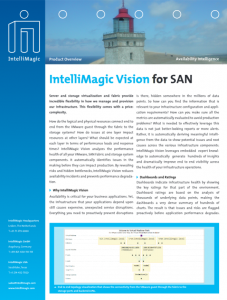Download the Brochure
Server and storage virtualization and fabric provide incredible flexibility in how we manage and provision our infrastructure. This flexibility comes with a price: complexity.
IntelliMagic Vision is vendor-independent and supports a wide range of storage systems from different makes and models. Additionally, IntelliMagic collects performance and configuration information on the VMware, fabric, and storage systems to provide a complete end-to-end picture.
This brochure shows how you can proactively prevent disruption and manage the performance, capacity, and configuration of your multi-vendor SAN environment.
Related Resources
How to Detect and Resolve “State in Doubt” Errors
IntelliMagic Vision helps reduce the visibility gaps and improves availability by providing deep insights, practical drill downs and specialized domain knowledge for your SAN environment.
Finding Hidden Time Bombs in Your VMware Connectivity
Seeing real end-to-end risks from the VMware guest through the SAN fabric to the Storage LUN is difficult, leading to many SAN Connectivity issues.
Platform-Specific Views: Vendor Neutral SAN Monitoring Part 2
Each distributed system platform has unique nuances. It's important for a solution to be capable of getting the detailed performance data capable of supporting vendor-specific architectures.
